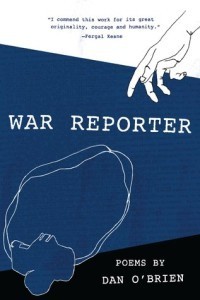Clifford Garstang's Blog, page 53
February 2, 2015
The New Yorker: “Sweetness” by Toni Morrison
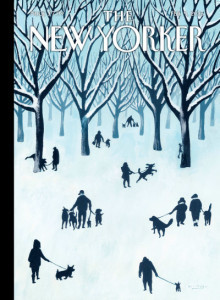 February 9, 2015: “Sweetness” by Toni Morrison
February 9, 2015: “Sweetness” by Toni Morrison
This is an excerpt from Morrison’s new novel, God Help the Child, due out in April this year. In this excerpt, the narrator, who is in her sixties and lives in a modest nursing home, recounts how she was tough on her only child, a daughter, Lula Ann, largely because of how dark-skinned the daughter was. The narrator herself came from a light-skinned black family—including some who passed or could have passed for white—so having a very dark daughter was a shock. Because she didn’t want people to assume she was the mother of that child, she had the girl call her “Sweetness.” The shock was enough to break up her marriage, as well, which made things even harder on mother and child.
She was so hard on Lula Ann that the girl left as soon as she could. The mother doesn’t even have an address for her, although the daughter does regularly send money and has just sent a note to say she’s expecting a baby. The narrator doesn’t know what Lula Ann—who now goes by another name—does or who the father of the child might be.
And that’s about all we can say about this fiction. It certainly doesn’t make a great story by itself, but it does suggest an intriguing novel. (Here’s the Publisher’s Weekly review of the novel.)
“More Than Mere Setting” — my guest blog post at Late Last Night Books
 I was recently invited to do a guest blog post for Late Last Night Books, which you can read here: More than Mere Setting. The post is a short discussion of the importance of setting in fiction in which I make several references to my own work.
I was recently invited to do a guest blog post for Late Last Night Books, which you can read here: More than Mere Setting. The post is a short discussion of the importance of setting in fiction in which I make several references to my own work.
I was also interviewed on that blog by Sally Whitney, which interview you can read here: Interview with Clifford Garstang.
Thanks to Sally Whitney for inviting me to participate!
February 1, 2015
2015 Reading: War Reporter by Dan O’Brien
This is a collection of poetry unlike anything I’ve read before although the work that comes closest is O’Brien’s own play, The Body of an American. Both works are about the war reporter Paul Watson who won a Pulitzer Prize for his iconic photograph of the desecration of the body of an American soldier.
Others have said that this book reads more like a lyric novel than a book of poetry. While I don’t disagree with that, taken individually, each poem presents a single haunting image that, for me, is the hallmark of memorable poetry. A recent poem in the Missouri Review, while not part of the book, is representative of the poems in the collection: The War Reporter Paul Watson and the Son of the Tortured.
Some of these images are so horrific as to be nearly unbelievable, and yet we know that these are true stories, or if not exactly true, they represent the truth of war. In poem after poem, we are shocked again by what the War Reporter Paul Watson has seen and, not only that, what humanity has perpetrated on itself. It is important, life-changing stuff, a story that needs to be told. O’Brien has done so brilliantly.
2015 Reading: Red Scare by T.R. Pearson
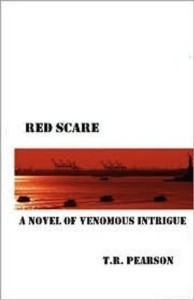 Red Scare by T.R. Pearson
Red Scare by T.R. Pearson
I hadn’t heard of of Pearson until his name appeared on a list of “literary mystery” writers in a graduate seminar I took on plot more than ten years ago. I read his book Blue Ridge then and shortly after that Polar, two small-town mysteries set in my part of Virginia (he lives, or lived, not far from me). I even caught an event he did at a bookstore in Roanoke at about that time. (Loved the event: he only read one page from the book and spent the rest of the time talking about his experience in Hollywood working on screenplays, and while he spoke his dog wandered among the listeners.)
I then picked up his earlier books, which are highly regarded, but I confess I still haven’t read them.
Recently I noticed that he had self-published a few books for Kindle, so I bought them. Red Scare, a novella, is the first of these that I’ve read.
It’s a quirky little mystery/romance about a high school teacher and a museum curator who become involved in the effects of a centuries-old Venetian curse that causes ten murders every ten years. The teacher, a widower, is ready, finally, to date again, and as it happens the museum curator is a slob, just like his late wife, so . . .
The curse, by the way, involves some nasty red lizards who emerge from a palace in Venice and make their way around the world by crawling into backpacks and camera bags. Very creepy.
It’s not a great book, but it’s short and distracting.
January 31, 2015
2015 Reading: The Poison that Purifies You by Elizabeth Kadetsky
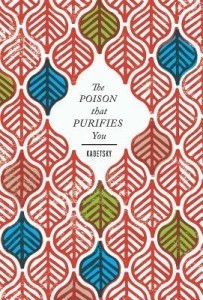 The Poison That Purifies You by Elizabeth Kadetsky
The Poison That Purifies You by Elizabeth Kadetsky
This report won’t go into too much detail because I’m writing a full review of the book to be published elsewhere (I’ll post links when that’s available), but I wanted to include this in my reading log now.
I’ve known Elizabeth for several years. I think we first met at a writers’ colony or conference, and now sometimes bump into each other at AWP. So I was pleased to see this story collection from CR Press, a small outfit that is producing some very nice books.
And I really enjoyed the stories here, which are dark and complex, just the kind of stories a serious reader can dive into and think about. Plus several of them take place abroad (India, Guatemala, etc.), another sort of story I like (and perhaps should have solicited for Everywhere Stories).
As I say, the full review is forthcoming, and I’ll add a link when it appears.
January 30, 2015
Artist in Residence — at HOME
 I’ve declared that February is “Leave me alone I’m writing a novel” month. In other words, for the 4 weeks of February, I’m going to do my best to achieve the focus I’ve generally managed to find in writing residencies, but in the comfort of my own home.
I’ve declared that February is “Leave me alone I’m writing a novel” month. In other words, for the 4 weeks of February, I’m going to do my best to achieve the focus I’ve generally managed to find in writing residencies, but in the comfort of my own home.
If you’ve ever been to an art colony, you know what I’m talking about. I haven’t done that many, but I’ve been to the Virginia Center for the Creative Arts a number of times (including their property in France) and I’ve been once to Kimmel Hardin Nelson Center for the Arts, The Hambidge Center, and Ragdale. For different reasons, these were all wonderful experiences and for the most part I got a lot of writing done during each residency.
However, since I returned from Ragdale at the end of November, I haven’t done much writing. I’ve made a little progress on my new novel, but not much. I’ve had other projects that needed attention, but with more focus I believe I could have been further along on the book. I need a residency, but I can’t get away just now (I don’t want to board my elderly dog for a long period) and, frankly, I shouldn’t need to. I’ve got a nice house and good workspace. What I need is . . . discipline.
So, here’s what I plan to do during the month of February (and beyond, if I can keep it up):
Keep my Internet/Social Media usage to a minimum. I’m a Facebook addict, I admit it. I find it fun and also useful. It’s unrealistic to think that I’ll be able to stay away altogether, but I’m going to make an effort to limit myself. Only at night? We’ll see.
Stay out of the coffee shop. For the past year or so, I’ve been a regular at a local coffee shop. I get a little done there, so it’s not a total waste, but I spend time on travel and money on coffee unnecessarily, and I also expend energy on blocking out distractions. I’ll try to limit my coffee shop visits to my writing group’s weekly “write-in”–a chunk of time one afternoon where we come together just to write.
Write morning and afternoons. When I’m at a residency, I usually work all morning and all afternoon, punctuated by walks to clear the head, and sometimes work in the evening, too. At home I’m less good about afternoon work. Instead, I use afternoons for errands or cleaning. I do have a lot of reading that needs to get done, though, so that will be my evening “work.”
Keep working on the weekends. I do this more or less anyway, because for a writer it makes no difference whether the day is a weekday, a weekend, or a holiday. At a residency, this is even more true. The day of the week is irrelevant. There’s nothing special about the weekend.
If I’m able to stick to these resolutions, by the end of February I should be very close to having a very solid draft of my new book. Wish me luck!
Tips for Writers: Where should I submit?
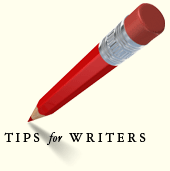 As most readers of this blog know, I publish an annual list of the top literary magazines. Many people have told me how helpful the list is, and I’m happy to provide this service. You can see the 2015 lists–one each for Fiction, Nonfiction, and Poetry–here: Literary Magazine Ranking. (Access to the lists is free; donations to support this blog are welcome.)
As most readers of this blog know, I publish an annual list of the top literary magazines. Many people have told me how helpful the list is, and I’m happy to provide this service. You can see the 2015 lists–one each for Fiction, Nonfiction, and Poetry–here: Literary Magazine Ranking. (Access to the lists is free; donations to support this blog are welcome.)
Because of the lists, I am frequently asked for advice as to where a particular writer should submit his or her work. Without seeing the work, of course, it’s almost impossible for me to give reasoned advice, and I certainly don’t have time to look at others’ work to make that judgment. But I thought it might be useful to give some general tips related to this issue. Beginners, especially, might find it helpful.
1. Tiering. I created my ranking system so I could submit to magazines that are roughly equal in stature. If I’m going to send out five submissions at a time, I want to make sure that an acceptance won’t lead me to have to withdraw from a far superior magazine. So I aim high on the list, and as the rejections inevitably roll in, I’ll move to the next tier down.
2. Reading Journals. This should go without saying, but the advice is often ignored. Before you submit to a journal, you should read at least one issue. Easy to do if it’s an online magazine, a little harder if the journal is print only. But really the only way to know if your work is suitable for, say, Tin House, is read Tin House. Most journals do publish realistic fiction in contemporary settings, so if that’s what you write then you have a lot of options. But if you’re writing science fiction, your options are more limited. Read magazines to find out what their range is.
3. Follow the Guidelines. Always, always, always review a particular magazine’s submission guidelines to see what they’re looking for in terms of format, including word count. Magazines vary widely, so be sure to give them what they want. It’s not that hard, especially in the age of online submission managers.
4. Think outside the list. As wonderful and helpful as my rankings are, they only include a fraction of the magazines you might submit to. For example, I am the editor of Prime Number Magazine, a publication of which I am quite proud. However, because we have not yet won a Pushcart Prize or a Special Mention, my own magazine isn’t on my list of the top magazines. What’s up with that? Especially if you’re interested in online publications–to reach more readers, for example–you need to check other sources, such as Duotrope.com, NewPages.com, and Poets & Writers to find out which magazines are looking for your work.
5. Proofread your work. Wherever you decide to send your stuff, proofread several times. Even if your style and subject matter are perfect for a particular magazine, errors may cause it to be rejected.
I hope these basic tips are useful.
January 29, 2015
2015 Reading: Reality: A Very Short Introduction by Jan Westerhoff
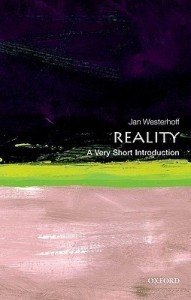 Reality: A Very Short Introduction by Jan Westerhoff
Reality: A Very Short Introduction by Jan Westerhoff
At least the book’s title isn’t “Reality for Dummies.” I frequently dig into books on philosophical questions–comes from being a philosophy major in college, maybe–but this one I read because I’m working on a novel that deals with theories of knowledge, and getting a handle on reality is part of that larger topic.
The chapters of this short book give a sense of what it covers: “Dreams and simulations”; “Is matter real?”; “Are persons real?”; “Is time real?”; and “Concluding remarks.” These questions about the reality of matter, persons, and time aren’t really answered, but various theories that do offer answers are presented.
The concluding chapter offers an extremely helpful summary of the range of positions the various theories take, from universalism, to solipsism, to anti-solipsism, to selective realism, to something the author calls irrealism (which would say that nothing is real).
For anyone who wants to dig deeply into the subject, this might be a good place to start. It was just right for my purposes, I think, and helps shape one of the themes of my novel.
January 28, 2015
The New Yorker: “Hubcaps” by Thomas McGuane
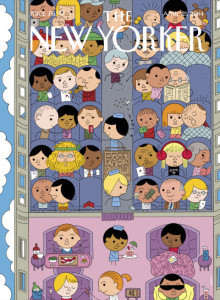 April 21, 2014: “Hubcaps” by Thomas McGuane
April 21, 2014: “Hubcaps” by Thomas McGuane
Owen’s parents drink and fight a lot. He plays baseball and steals hubcaps. He also is nice to the handicapped kid across the street, Ben. Stuff that happens in the story: the mother starts a grease fire in the kitchen and then the parents calmly inform Owen that they’re separating. The officious safety kid on the school bus discovers Owen has pet turtles stashed in his lunchbox and, because that’s a violation of some rule, takes them and throws them out the window where they explode on the pavement. And Ben, who is being teased by a couple of mean girls, does something that gets him moved to a different school. That’s it. Not much of a story, in my view.
I assumed that it’s an excerpt from a novel but there’s no indication in the Q&A with Thomas McGuane that this is the case. It’s a real puzzle why this story is in the magazine.
January 26, 2015
The New Yorker: “Alice” by Elizabeth Harrower
 February 2, 2015: “Alice” by Elizabeth Harrower
February 2, 2015: “Alice” by Elizabeth Harrower
This story, set in Australia, has the feeling of a fairy tale, one that concludes with the main character’s epiphany. Alice is the daughter of immigrants (from the “Old Country”), but she isn’t valued as hightly as her younger brothers. She’s destined to help her mother around the house, raising the boys and indulging their whims. (The father is no help.) A young man shows interest in Alice, so suddenly she finds herself married to him. He’s pretty shallow, cheats on her twice, and after the second time they divorce. Then Alice’s mother finds her a rich older man to marry, and Alice finds herself taking care of him. All the while, Alice wishes she had someone to talk to, someone who knew her. At the end, though, she realizes that she’s her own person, and that she knows who she is.
The story is a bit like a Robert Coover story, although more penetrable. The men are all louses (lice?), but then it’s a fairy tale, so maybe that makes such misandry okay.
The Q&A with Elizabeth Harrower is interesting, and may shed some additional light on the story. (I like that she uses the word “awakening” instead of “epiphany.” It’s very interesting, also, that Harrower stopped writing fiction in 1971, and this story came to light because some of her work is now being republished in Australia.
And here’s a fascinating article about her from last year: Novelist Elizabeth Harrower has lived dangerously but kept her words to herself.
Lastly, it seems that The New Yorker published another of her stories in its pages last year, but I’m still getting caught up on the 2014 stories, so it will be awhile before I get to that one.

